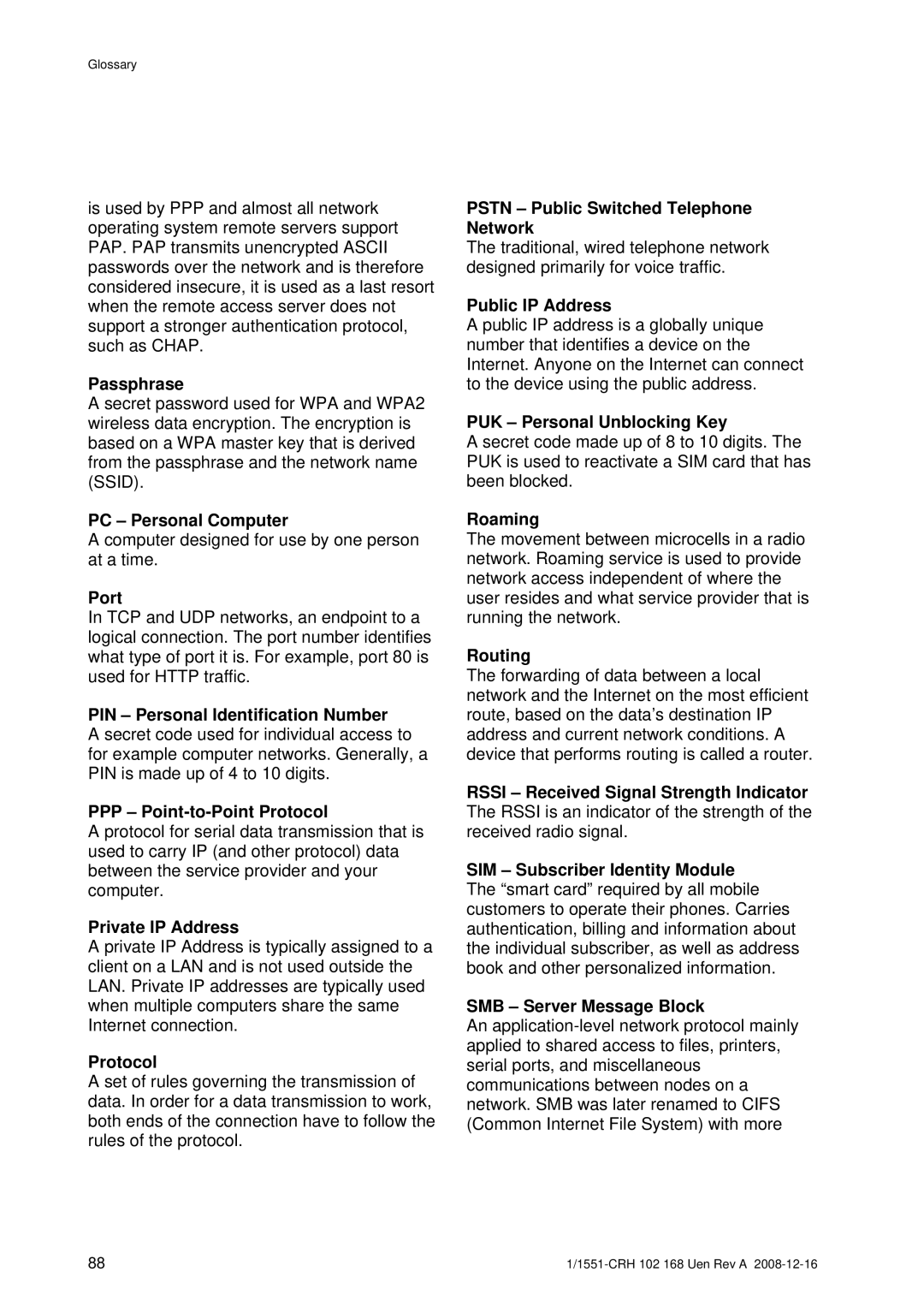Glossary
is used by PPP and almost all network operating system remote servers support PAP. PAP transmits unencrypted ASCII passwords over the network and is therefore considered insecure, it is used as a last resort when the remote access server does not support a stronger authentication protocol, such as CHAP.
Passphrase
A secret password used for WPA and WPA2 wireless data encryption. The encryption is based on a WPA master key that is derived from the passphrase and the network name (SSID).
PC – Personal Computer
A computer designed for use by one person at a time.
Port
In TCP and UDP networks, an endpoint to a logical connection. The port number identifies what type of port it is. For example, port 80 is used for HTTP traffic.
PIN – Personal Identification Number
A secret code used for individual access to for example computer networks. Generally, a PIN is made up of 4 to 10 digits.
PPP – Point-to-Point Protocol
A protocol for serial data transmission that is used to carry IP (and other protocol) data between the service provider and your computer.
Private IP Address
A private IP Address is typically assigned to a client on a LAN and is not used outside the LAN. Private IP addresses are typically used when multiple computers share the same Internet connection.
Protocol
A set of rules governing the transmission of data. In order for a data transmission to work, both ends of the connection have to follow the rules of the protocol.
PSTN – Public Switched Telephone Network
The traditional, wired telephone network designed primarily for voice traffic.
Public IP Address
A public IP address is a globally unique number that identifies a device on the Internet. Anyone on the Internet can connect to the device using the public address.
PUK – Personal Unblocking Key
A secret code made up of 8 to 10 digits. The PUK is used to reactivate a SIM card that has been blocked.
Roaming
The movement between microcells in a radio network. Roaming service is used to provide network access independent of where the user resides and what service provider that is running the network.
Routing
The forwarding of data between a local network and the Internet on the most efficient route, based on the data’s destination IP address and current network conditions. A device that performs routing is called a router.
RSSI – Received Signal Strength Indicator The RSSI is an indicator of the strength of the received radio signal.
SIM – Subscriber Identity Module The “smart card” required by all mobile customers to operate their phones. Carries authentication, billing and information about the individual subscriber, as well as address book and other personalized information.
SMB – Server Message Block
An
88 |
